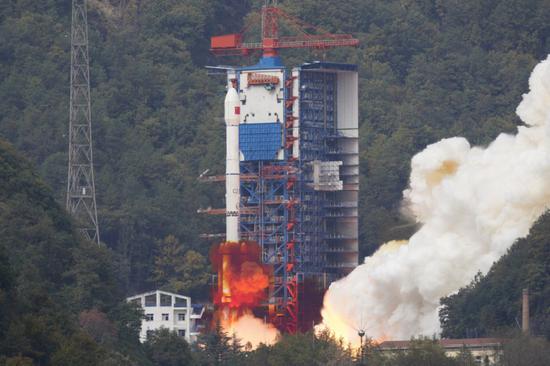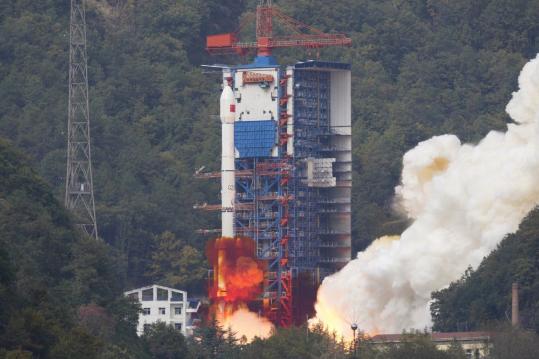Long March 3B rocket blasts off for 100th time

A Long March 3B carrier rocket blasts off at 1:56 pm from the Xichang Satellite Launch Center in Sichuan province to place an experimental satellite in space, Dec 3, 2024. (Photo/China News Service)
China launched a Long March 3B carrier rocket on Tuesday afternoon from the Xichang Satellite Launch Center in Sichuan province to place an experimental satellite in space, according to China Aerospace Science and Technology Corp.
The rocket blasted off at 1:56 pm and soon deployed the satellite, named Communication Technology Demonstrator 13, into its preset orbit, the State-owned space contractor said in a news release.
The flight marked the 100th launch of the Long March 3B model, making it the first of all Chinese rocket types to achieve this feat. All 100 of its missions were conducted from the Xichang spaceport.
The Long March 3B, a mid-lift model developed by the China Academy of Launch Vehicle Technology, a CASC subsidiary, stands at 56.3 meters and has a diameter of 3.35 meters. Propelled by liquid-propellant engines, the rocket has three stages and four 2.25-meter-wide side boosters, and weighs 456 metric tons when filled with fuel.
It is mainly used to launch satellites into geostationary transfer orbit and can transport 5.5 tons of payloads to such an orbit. It can also send spacecraft to other kinds of orbits such as medium-Earth and lunar transfer orbits.
Research and development of the Long March 3B started in July 1989, and it began to receive governmental funding in 1993.
The model's first launch took place in February 1996, tasked with placing a communications satellite in orbit. However, the rocket suffered a guidance failure and soon crashed into a mountain near the Xichang center.
The second launch happened in August 1997, successfully transporting the first satellite owned by a Filipino aerospace company to orbit.
The model has since participated in a host of national space programs, including ferrying most Beidou satellites to their orbits and placing the Chang'e 3 and Chang'e 4 lunar probes on their moon-bound trajectory.
Beidou is one of China's largest civilian satellite systems and is also one of four global navigation networks, along with the United States' GPS, Russia's GLONASS and the European Union's Galileo.
Since 2000, 64 Beidou satellites have been carried into space on 47 Long March 3 series rockets from Xichang.
Tuesday's mission marked China's 60th space launch this year and the 549th flight of the Long March family.
Designed and built by the Shanghai Academy of Spaceflight Technology, another CASC subsidiary, the Communication Technology Demonstrator 13 satellite will be used for satellite communication, radio and television signal relay, data transmission and technological tests.

